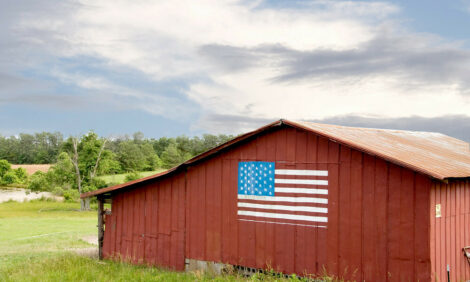



Windrowing Litter Can Reduce Pressure from Poultry Viruses, Insects and Bacteria
GLOBAL - Poultry producers looking to improve litter quality and flock health should consider windrowing — a practice that not only works to control ammonia in the reconditioned litter but also reduces pathogen and insect pressure.Windrowing involves raking or rolling the litter into even rows. The moisture present in the rows increases litter temperature, which releases ammonia while reducing pathogens including bacteria, viruses and pests.
Producers interested in windrowing should begin incorporating it into their litter-management program during moderate or warm weather, according to Casey Ritz, PhD, poultry-waste management, University of Georgia.
“There’s a bit of a learning curve with the process,” he said in a WattAgNet webinar.
Ammonia levels will likely increase following the windrowing process, requiring the use of a litter treatment. The intense heat generated by windrowing inhibits microbial and viral growth while allowing the floor to dry between rows of piled litter. The windrow also traps insects, which can make insecticide treatments more effective.
Tips for success
It is critical for windrowed litter to reach a temperature of at least 130° F (54° C) for 3 to 4 days to effectively reduce pathogen levels, the specialist said.
Ritz also stressed that the windrow process requires 12 to14 days of downtime between flocks. “We need time to heat the windrows, treat litter for ammonia and pests, and then level the material allowing it to cool and dry before the next chick placement.”
He shared these 10 additional tips for effective windrowing:
- Schedule a minimum of 12 to 14 days of downtime between flocks
- Start with a litter depth of 3 to 6 inches
- Form windrows within 2 days after bird catch
- Maintain a temperature in windrow of 130° F or higher for 3 to 4 days to ensure that pathogens are killed
- Turn windrows every 3 to 4 days (2 to 3 turns is optimal)
- Shift entire windrow when turning to allow the floors to dry
- Level material at least 4 days before chick placement to decrease litter temperature, litter moisture and ammonia levels
- Apply litter amendment to control release of ammonia
- Utilize moderate weather conditions primarily in spring, summer, fall
- Ventilate during windrow process to decrease ammonia levels
“Windrowing is not for everyone,” Ritz insisted, “but it can provide economic benefits to many average and below-average producing flocks through improved feed conversion and weight gain and reduced mortality.”
Poultry producers need to evaluate the time, equipment and labor costs associated with windrowing before committing to the system.
Litter amendments
Litter amendments play a crucial role in controlling ammonia. Amendments that decrease litter pH increase ammonia suppression.
The first step in reconditioning litter is de-caking or removing wet material primarily below drinkers. Amendments are then applied on top of the litter. “These amendments create unfavorable conditions for the bacteria and enzymes that contribute to ammonia formation and production,” Ritz said.
Litter amendments form a pH barrier on top of the litter preventing or slowing the formation of ammonia (NH3+). Acidifiers are most commonly used, binding the volatile ammonia (NH3+) with an acid to form the nonvolatile ammonium salt (NH4+).










